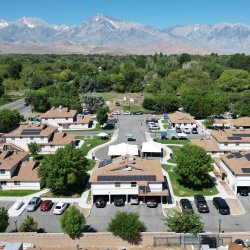At the foot of the Eastern Sierra Nevada mountains in Bishop, CA, sits the Bishop Paiute Tribe, the fifth largest California Tribe, with 2,000 members in one of the smallest land bases.
With limited land, renewable energy technology, energy sovereignty, and sustainability have been at the forefront of the Tribe's environmental development–and now, after over 200 single-family home solar installations, they are making history.
The Tribe became the first Tribal Nation to receive a solar installation incentive from the California Solar on Multifamily Affordable Housing (SOMAH) program. In partnership with GRID Alternatives Inland Empire and their workforce trainees, a 49 kW system was installed at Coyote Mountain Apartments, an affordable housing and sober living facility. Clean energy technology will save Tribal residents of this 24-unit complex almost $500,000 on their energy bills over the system's lifetime".

From left to right: Marisa Villarreal (SOMAH Program Manager), Amy Smith (CFO Highpoint Solar), Brian Adkins (Environmental Director of the Bishop Paiute Tribe), Lisa Castilone (GRID IE Community Development & Tribal Program Manager), Christina Snider (Tribal Affairs Secretary, Office of Governor Gavin Newsom), Commissioner John Reynolds (California Public Utilities Commission), Chairwoman Meryl Picard (Bishop Paiute Tribal Council)
On August 9th, 2023, representatives from the Tribal Affairs Office of Governor Gavin Newsom, the California Public Utilities Commission, GRID Alternatives Inland Empire, and the SOMAH program traveled to Bishop, CA, to join the Tribe at the Coyote Mountain Apartments for a ribbon-cutting ceremony to mark the completion of this historic project.
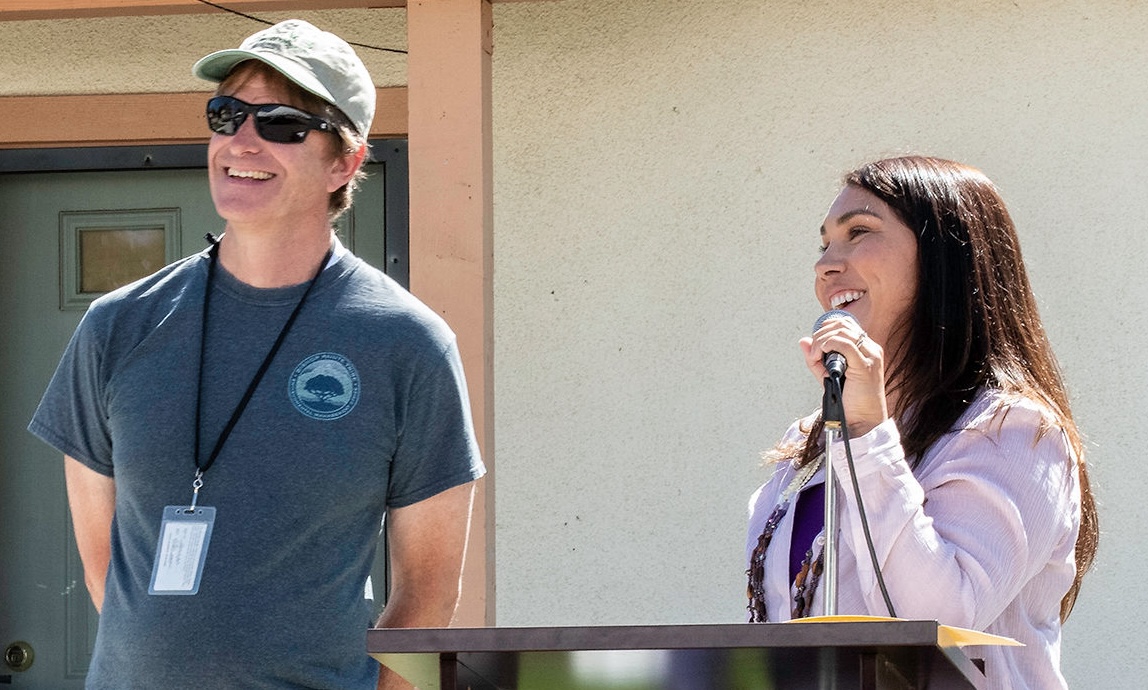
Brian Adkins (Environmental Director of the Bishop Paiute Tribe) and Chairwoman Meryl Picard (Bishop Paiute Tribal Council) at the ribbon-cutting
“We are a Tribe working towards climate goals to reduce carbon emissions alongside energy affordability for Tribal members living on the Bishop Paiute Reservation,” said Brian Atkins, Environmental Director of the Bishop Paiute Tribe. “Energy affordability is a major issue in our community.”
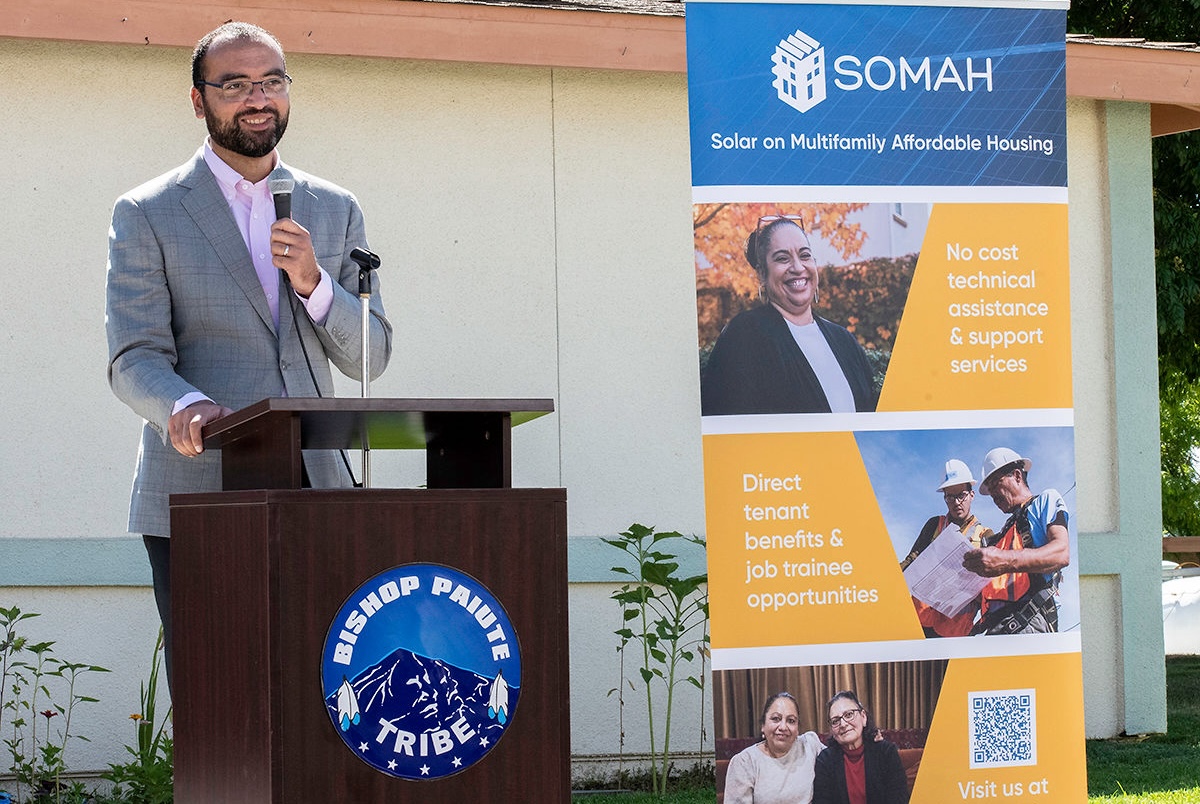
Commissioner John Reynolds (California Public Utilities Commission) speaking at the ribbon-cutting
California Public Utilities Commission (CPUC) Commissioner John Reynolds shared his enthusiasm about the completed project: “I congratulate the Bishop Paiute Tribe and GRID for completing the first Tribal solar project under the SOMAH Program. This is exactly the kind of community-based and community-led solar project we need more of, and as the Public Utilities Commission considers ways to improve the SOMAH Program in the future, I hope we hear from Tribes and organizations like the ones here today about what we can do to make sure solar reaches everyone.”
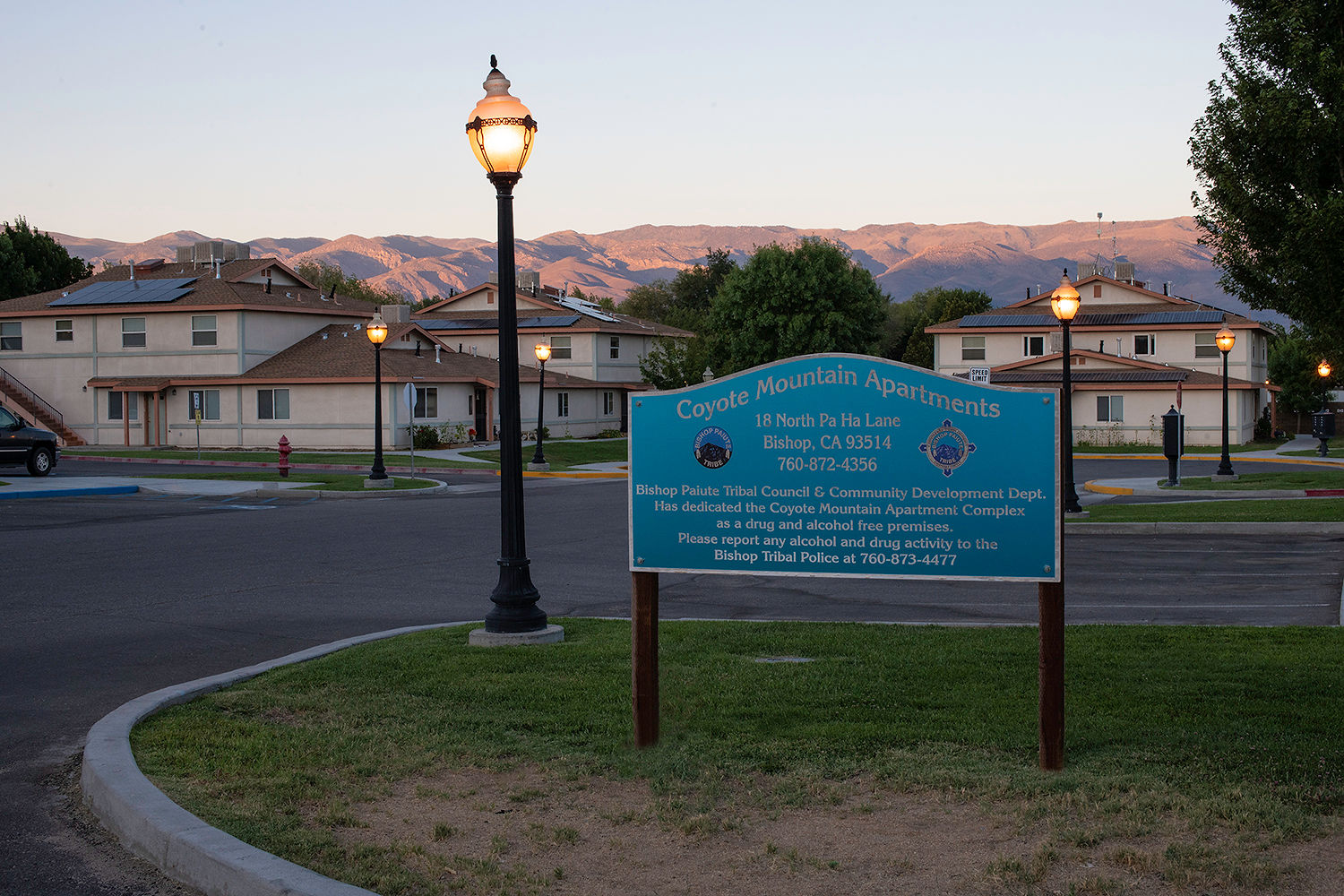
The Coyote Mountain Apartments in Bishop, CA
The Coyote Mountain solar installation represents a historical moment where SOMAH state funding, alongside a GRID Tribal Solar Accelerator Fund Sempra Foundation grant and in-kind donations, was allocated toward a just transition to clean energy for a California Tribal Nation.
According to the U.S. Department of Energy, American Indian land comprises 2% of U.S. land but contains an estimated 5% of all renewable energy resources.
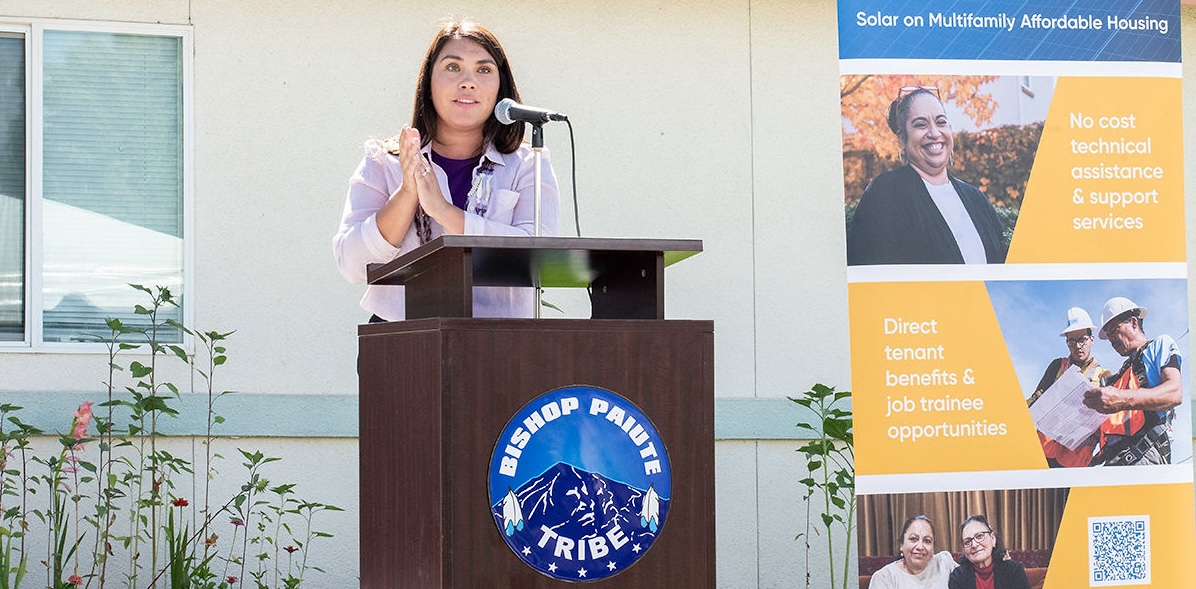
Chairwoman Meryl Picard (Bishop Paiute Tribal Council) speaking at the ribbon-cutting
“Highlighting this event, the partners, and giving that information to the other Tribal communities and leaders is going to be a huge help in spreading the word throughout Indian country,” said Meryl Picard, Tribal Chairwoman of the Bishop Paiute Tribe.”[Bishop Paiute] is definitely willing to have those conversations with other Tribes about how we got that started so we can continue these partnerships throughout Indian country.”
In 1912, the Bishop Paiute people, alongside other Indigenous Tribes, lived on a 67,000-acre reservation in the Owens Valley, a lush and bio-diverse land. Twenty years later, the U.S. government revoked these lands and placed the Paiute people on 875 acres, placing one of the largest tribal nations in California on one of the smallest reservations in the state.
Now, they stand by a culture of progressive development that highly values self-sufficiency and self-reliance and a commitment to being a strong, self-governing sovereign nation, a mission reflected in their current climate goals.
“Through savings from solar energy, residents at Coyote Mountain will have more disposable income to spend toward general living expenses like transportation and building their own savings,” said Atkins.
The Coyote Mountain solar installation also represents the importance of opportunities for multifamily homes, as Tribal Nations are primarily single-family homes, leaving out renters.
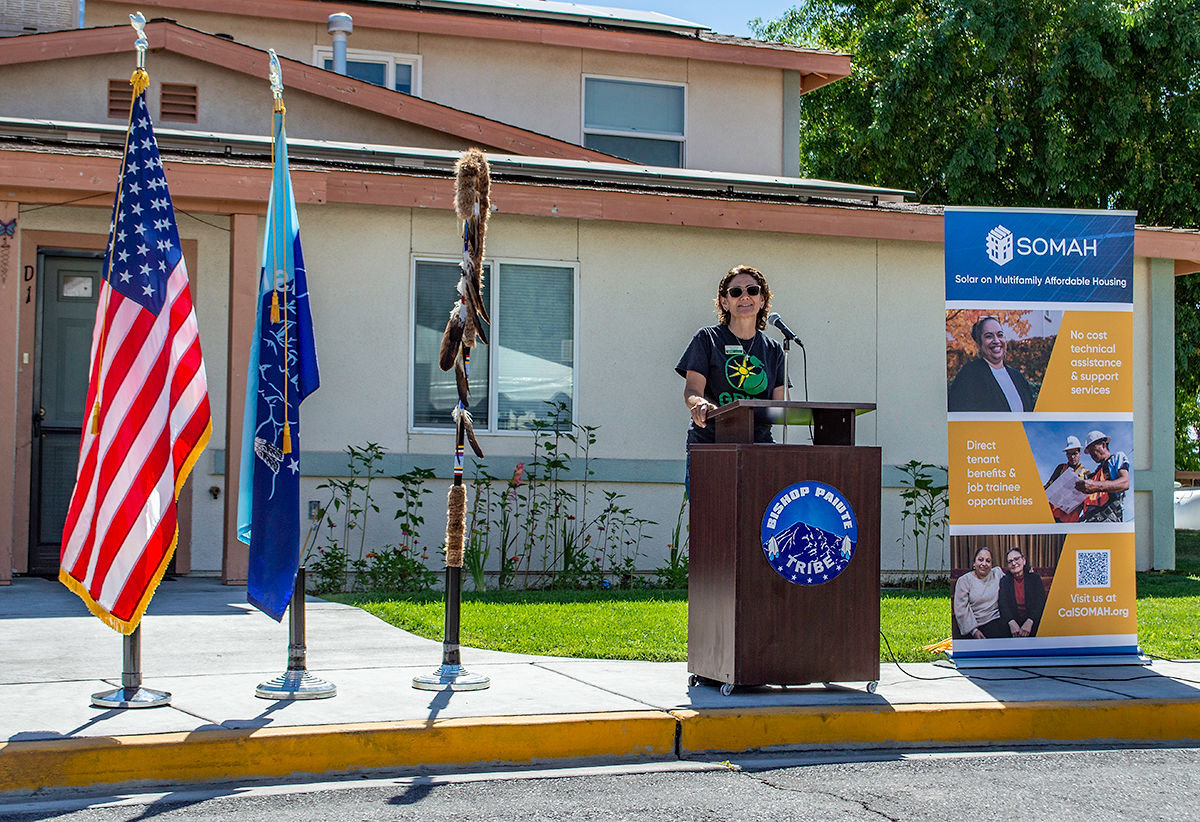
Lisa Castilone (GRID IE Community Development & Tribal Program Manager), speaking at the ribbon-cutting
“Single and multifamily renters usually have no opportunities to benefit from solar. The SOMAH Program brings funding solutions and job training opportunities for low-income/affordable housing projects. It offers developers and building owners the assistance they need to develop solar projects while providing local workforce development opportunities.” said Lisa Castilone, Community Development & Tribal Program Manager at GRID Inland Empire.
According to a study by the California Coalition for Rural Housing and the Rural Community Assistance Corporation, one-third of those who are living in Tribal areas in California live below the federal poverty line – more than twice the rate of the general population in California.
Also, many Native households live in single-family homes or mobile homes, with more than a third of families living in overcrowded conditions. Over 60% of these homes were built over three decades ago, and nearly one-fifth need significant physical improvements.
“[GRID Alternatives] works to identify the apartments in these disadvantaged communities and conduct outreach to those owners and developers,” said Castilone. “Many Tribal communities are not getting the information they need to receive clean energy resources. It’s part of my job to ensure tribal nations in my region get the renewable energy solutions they need.”
Not only did the Coyote Mountain solar installation make history, but it also created clean energy jobs. GRID’s Workforce Development Program trained Tribal members in solar installation, readying them for a new career in clean energy and opening up employment opportunities directly with the local population.
For GRID trainee Marika Arnell, her journey into the solar industry aligns with her passion for learning new skills and her desire to share space with her community.
Arnell was trained by GRID Alternatives and hired onto the Coyote Mountain project by Highpoint Solar. Before getting trained, she admits to knowing "zero" about how solar energy works, but through GRID-lead courses and hands-on experience, she now takes pride in being one of the few women on the roof.
"I am up there with the guys. Girls can do this too!" said Arnell. "It was good for me to have instructors who showed you how it's done but then let you try it yourself."
Solar is on pace to employ 400,000 people in America by 2030, and the overall clean energy industry is expected to hire more than 900,000 workers by 2035 to reach the nation’s 100% clean electricity goal.
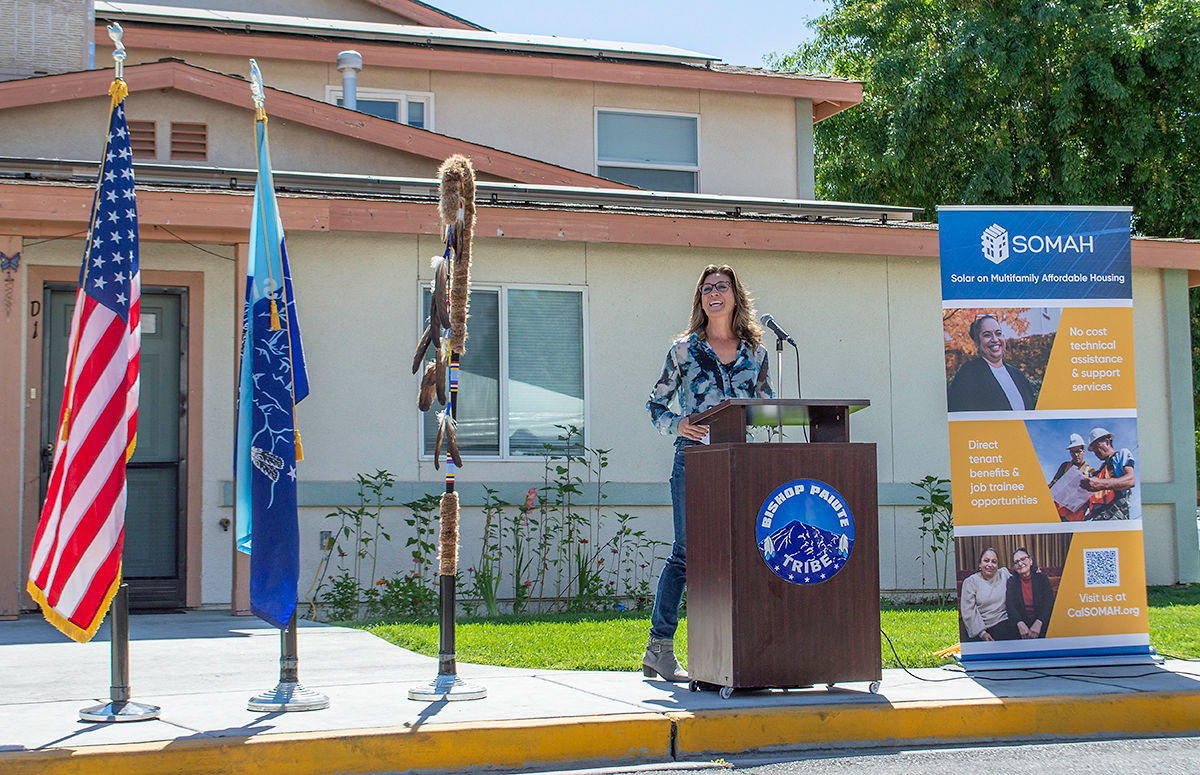
Amy Smith (CFO Highpoint Solar), speaking at the ribbon-cutting
“Solar is the future, and we believe it is important to bring that to low-income communities. We take so much pride in helping people gain that future for themselves, regardless of their socioeconomic status,” said Amy Smith, CFO of Highpoint Solar. “The community impact is so valuable. When we go onsite on an installation, here on a Tribal Reservation, the cost savings those individuals get to take advantage of are huge.”
“From our first solar installation with the Bishop Paiute Tribe ten years ago to this most recent and historic solar project at Coyote Mountain Apartments, GRID IE is proud of its decade-long partnership of delivering renewable energy solutions and job-training opportunities to Tribal residents,” said Jaime Alonso, Executive Director of GRID Alternatives Inland Empire. “We look forward to deepening and expanding our energy and job training working partnership with the Tribe for decades to come.”
History has been made, but the work doesn’t stop. SOMAH and GRID Alternatives are set to install their second multifamily installation called Arrowhead, a 14-unit apartment building also for the Bishop Paiute Tribe.
“SOMAH helps deliver the benefits of clean energy to people throughout California who don't necessarily own their own homes. Providing access to these customers can help make energy more affordable and benefit both environmental and economic development,” said John Reynold, California Public Utilities Commission Commissioner.

